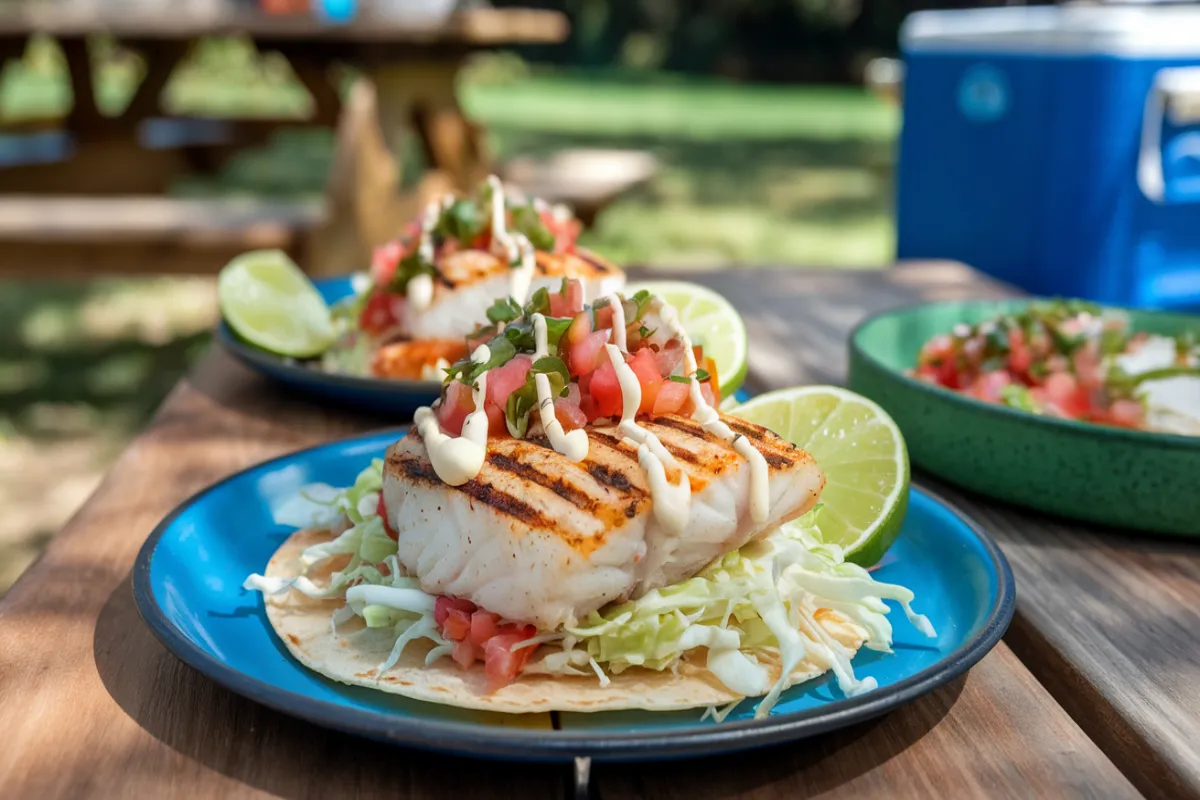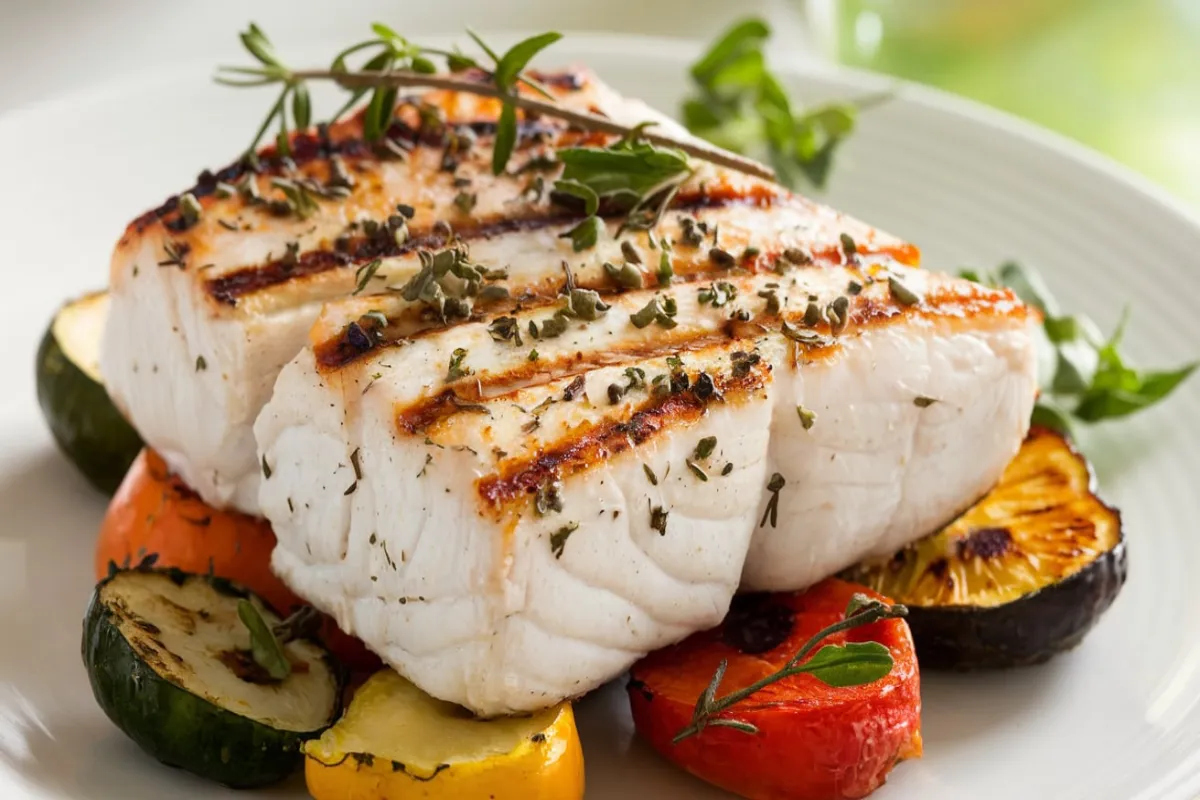Is Halibut a Nice Fish to Eat? A Comprehensive Guide to Flavor, Nutrition, and Cooking Tips
Introduction
Halibut is a popular choice for seafood lovers around the world. Known for its mild flavor and firm texture, halibut is a versatile fish that can be prepared in various ways, making it a favorite in many kitchens. But what exactly makes halibut such a nice fish to eat? In this article, we’ll explore the unique qualities of halibut, its nutritional benefits, the best ways to cook it, and some creative recipes to try at home. By the end, you’ll have a thorough understanding of why halibut is not only a nice fish to eat but also a nutritious and delicious option for your next meal.
What Does Halibut Taste Like?
Halibut is often praised for its mild, slightly sweet flavor, which makes it a great choice for those who are new to eating fish or who prefer a less “fishy” taste. The texture of halibut is firm and meaty, holding up well to a variety of cooking methods. Because of its neutral flavor, halibut easily absorbs the seasonings and sauces it’s cooked with, making it a highly adaptable fish in the kitchen.
Mild and Delicate Flavor
Halibut’s mild flavor is one of its most appealing characteristics. Unlike stronger-tasting fish like salmon or mackerel, halibut has a gentle taste that is not overpowering. This makes it a versatile base for many recipes, allowing chefs and home cooks to experiment with different herbs, spices, and marinades. Halibut’s flavor profile is often described as “clean” and “fresh,” making it an excellent choice for those who may be sensitive to the more pungent flavors of other types of fish.
Firm and Meaty Texture
The firm texture of halibut makes it ideal for grilling, baking, frying, and broiling. Unlike more delicate fish that can fall apart during cooking, halibut retains its structure, making it easy to handle and perfect for dishes where presentation matters. Its meatiness also provides a satisfying bite, making it a great alternative to red meat in many recipes. This firm texture also allows halibut to be used in a variety of culinary applications, from simple grilled fillets to more complex dishes like fish stews and seafood pastas.

Nutritional Benefits of Halibut
Beyond its taste and texture, halibut is also a nutritious choice, offering a variety of health benefits. It’s rich in high-quality protein, low in fat, and packed with essential vitamins and minerals. Here’s a closer look at the nutritional profile of halibut:
High in Protein
Halibut is an excellent source of lean protein, providing about 20 grams of protein per 3-ounce serving. Protein is essential for muscle repair, immune function, and overall health. Eating halibut can help you meet your daily protein needs without consuming excessive calories or fat. Additionally, the protein in halibut is of high biological value, meaning it contains all the essential amino acids your body needs to function properly.
Low in Fat and Calories
Halibut is naturally low in fat, with only about 1 gram of fat per 3-ounce serving. It’s also low in calories, making it a great option for those who are watching their calorie intake. The fat that is present in halibut is primarily heart-healthy omega-3 fatty acids, which have been shown to reduce inflammation and support cardiovascular health. Omega-3 fatty acids are essential fats that our bodies cannot produce, so it’s important to obtain them through diet, and halibut is an excellent source.
Rich in Vitamins and Minerals
Halibut is a good source of several important vitamins and minerals, including:
- Vitamin D: Essential for bone health and immune function, vitamin D helps your body absorb calcium. This is particularly important for those living in areas with limited sunlight, as vitamin D synthesis is triggered by sun exposure.
- Vitamin B12: Supports nerve function and helps produce red blood cells. A deficiency in B12 can lead to anemia and neurological issues, making it important to include B12-rich foods like halibut in your diet.
- Selenium: An antioxidant that protects your cells from damage and supports thyroid function. Selenium also plays a role in DNA synthesis and reproductive health.
- Magnesium: Important for muscle and nerve function, as well as maintaining a healthy heart rhythm. Magnesium is involved in over 300 biochemical reactions in the body, making it a critical nutrient for overall well-being.
Health Benefits of Eating Halibut
Regular consumption of halibut can provide a range of health benefits, thanks to its impressive nutritional profile. Here are some of the key health advantages of including halibut in your diet:
Supports Heart Health
The omega-3 fatty acids found in halibut are known for their heart-protective properties. These healthy fats can help lower blood pressure, reduce triglycerides, and decrease the risk of heart disease. Additionally, the low sodium content in halibut makes it a heart-friendly choice. Omega-3s are also known to reduce the risk of arrhythmias (irregular heartbeats) and may help lower the levels of inflammation in the body, which is a key factor in heart disease.
Promotes Bone Health
Halibut is rich in vitamin D, which is crucial for maintaining strong bones and teeth. Vitamin D aids in the absorption of calcium, helping to prevent osteoporosis and other bone-related issues. Regular consumption of halibut can contribute to better bone health, especially in populations at risk for vitamin D deficiency. Vitamin D also plays a role in regulating the immune system, which can help protect against infections and chronic diseases.
Boosts Brain Function
The omega-3 fatty acids in halibut also play a vital role in brain health. They have been linked to improved cognitive function, memory, and mood. Including halibut in your diet may help protect against age-related cognitive decline and support overall brain health. Omega-3s are also associated with a lower risk of depression and anxiety, as well as improved mental well-being.
Aids in Weight Management
Thanks to its high protein content and low calorie count, halibut is an excellent choice for those looking to manage their weight. Protein helps you feel full longer, reducing the likelihood of overeating. Additionally, the low-fat content of halibut makes it a satisfying and healthy option for those following a calorie-controlled diet. The high protein content also helps preserve muscle mass during weight loss, which is important for maintaining a healthy metabolism.
How to Cook Halibut: Tips and Techniques
Halibut’s firm texture and mild flavor make it incredibly versatile in the kitchen. Whether you prefer grilling, baking, or pan-searing, halibut can be prepared in a variety of ways. Here are some of the best methods for cooking halibut:
Grilling Halibut
Grilling is one of the most popular ways to prepare halibut, as it enhances the fish’s natural flavor while adding a smoky, charred element. To grill halibut:
- Preheat your grill to medium-high heat.
- Brush the halibut fillets with olive oil and season with salt, pepper, and your choice of herbs.
- Place the halibut on the grill, skin side down if applicable.
- Cook for about 4-5 minutes per side, or until the fish is opaque and flakes easily with a fork.
- Serve with a squeeze of lemon and a side of grilled vegetables or a fresh salad.
Grilling halibut is a great option for outdoor barbecues and gatherings, as it cooks quickly and can be paired with a variety of side dishes. The smoky flavor imparted by the grill complements halibut’s mild taste, making it a crowd-pleaser.
Baking Halibut
Baking is a simple and healthy way to cook halibut, allowing you to infuse the fish with various flavors through marinades or sauces. To bake halibut:
- Preheat your oven to 400°F (200°C).
- Place the halibut fillets in a baking dish and season with salt, pepper, and your favorite seasonings.
- Drizzle with olive oil or a marinade of your choice.
- Bake for 12-15 minutes, or until the fish is cooked through and flakes easily with a fork.
- Serve with roasted vegetables, quinoa, or rice.
Baking halibut is ideal for meal prep or when you need a quick and easy dinner. The fish can be marinated in advance, making it a convenient option for busy weeknights. Additionally, baking allows for even cooking, ensuring the halibut remains moist and tender.
Pan-Seared Halibut
Pan-searing halibut gives it a beautiful golden crust while keeping the inside moist and tender. To pan-sear halibut:
- Heat a tablespoon of olive oil in a skillet over medium-high heat.
- Season the halibut fillets with salt, pepper, and any other desired spices.
- Place the halibut in the skillet, skin side down if applicable.
- Cook for 3-4 minutes on each side, or until the fish is golden brown and cooked through.
- Serve with a light sauce, such as a lemon-butter sauce, and steamed vegetables.
Pan-searing is a quick and effective method for cooking halibut, allowing you to achieve a crispy exterior while retaining the fish’s moisture. This method is perfect for creating restaurant-quality dishes at home and can be paired with a variety of sauces and sides.
Poaching Halibut
Poaching is a gentle cooking method that helps retain the delicate flavor and moisture of halibut. To poach halibut:
- In a large saucepan, bring a mixture of water, white wine, lemon slices, and herbs to a simmer.
- Add the halibut fillets to the simmering liquid, making sure they are fully submerged.
- Poach for 10-12 minutes, or until the fish is opaque and flakes easily.
- Remove the halibut from the liquid and serve with a light sauce or over a bed of greens.
Poaching halibut is an excellent choice for those looking to maintain the fish’s natural flavor while adding subtle aromatic notes from the poaching liquid. This method is also low in fat, as it does not require additional oils or butter.

Creative Halibut Recipes to Try at Home
Now that you’re familiar with the basics of cooking halibut, let’s explore some creative recipes that showcase the versatility of this delicious fish.
Halibut Tacos with Mango Salsa
Ingredients:
- 4 halibut fillets
- Olive oil for brushing
- Salt and pepper to taste
- 8 small corn tortillas
- 1 ripe mango, diced
- 1/2 red onion, finely chopped
- 1 jalapeño, seeded and minced
- Juice of 2 limes
- Fresh cilantro, chopped
Instructions:
- Preheat the grill to medium-high heat.
- Brush the halibut fillets with olive oil and season with salt and pepper.
- Grill the halibut for 4-5 minutes per side, until cooked through.
- While the fish cooks, prepare the mango salsa by combining the mango, red onion, jalapeño, lime juice, and cilantro in a bowl.
- Warm the corn tortillas on the grill or in a skillet.
- Flake the halibut into bite-sized pieces and assemble the tacos by placing the fish in the tortillas and topping with the mango salsa.
- Serve with lime wedges and additional cilantro.
These halibut tacos are a fresh and flavorful way to enjoy the fish, with the sweetness of the mango salsa balancing the mild flavor of the halibut. This dish is perfect for a casual dinner or a summer gathering.
Halibut en Papillote
Ingredients:
- 4 halibut fillets
- 4 sheets of parchment paper
- 1 zucchini, thinly sliced
- 1 carrot, julienned
- 1 red bell pepper, thinly sliced
- 4 lemon slices
- Fresh thyme sprigs
- Olive oil for drizzling
- Salt and pepper to taste
Instructions:
- Preheat the oven to 375°F (190°C).
- Place each halibut fillet on a sheet of parchment paper.
- Arrange the zucchini, carrot, and red bell pepper slices around the fish.
- Top each fillet with a lemon slice and a sprig of thyme.
- Drizzle with olive oil and season with salt and pepper.
- Fold the parchment paper over the fish and vegetables, crimping the edges to seal.
- Place the packets on a baking sheet and bake for 15-20 minutes, until the fish is cooked through.
- Serve the halibut en papillote directly in the parchment, allowing guests to open their packets at the table.
Cooking halibut en papillote (in parchment) is a healthy and elegant way to prepare the fish, as it steams in its own juices along with the vegetables. This method is also highly customizable, allowing you to experiment with different herbs and vegetables.
Mediterranean Halibut with Olives and Tomatoes
Ingredients:
- 4 halibut fillets
- 1/4 cup extra-virgin olive oil
- 1 cup cherry tomatoes, halved
- 1/2 cup pitted Kalamata olives, halved
- 2 cloves garlic, minced
- Juice of 1 lemon
- Fresh parsley, chopped
- Salt and pepper to taste
Instructions:
- Preheat the oven to 400°F (200°C).
- In a baking dish, combine the cherry tomatoes, olives, garlic, and olive oil.
- Place the halibut fillets on top of the tomato mixture and drizzle with lemon juice.
- Season with salt and pepper.
- Bake for 15-20 minutes, until the fish is cooked through and the tomatoes are softened.
- Garnish with chopped parsley and serve with crusty bread or a side of couscous.
This Mediterranean-inspired halibut dish is bursting with flavor from the olives, tomatoes, and garlic. The combination of these ingredients creates a delicious sauce that perfectly complements the mildness of the halibut.
Best Dishes and Pairings with Halibut
Halibut’s mild flavor allows it to pair well with a variety of sides and sauces. Here are some classic and creative pairings that complement the delicate taste of halibut:
1. Citrus and Herb Butter
A simple citrus and herb butter sauce can elevate the flavor of halibut without overpowering it. Combine melted butter with lemon or lime juice, fresh herbs like parsley or dill, and a pinch of garlic for a flavorful drizzle.
2. Roasted Vegetables
Roasted vegetables, such as asparagus, carrots, or Brussels sprouts, provide a hearty and healthy side dish that pairs well with halibut. The caramelized flavors of the vegetables complement the mildness of the fish.
3. Garlic Mashed Potatoes
Creamy garlic mashed potatoes are a comforting side that contrasts nicely with the light texture of halibut. The richness of the potatoes adds depth to the meal, making it more satisfying.
4. Quinoa Salad
For a lighter, nutrient-packed option, serve halibut with a quinoa salad. Mix cooked quinoa with diced cucumbers, cherry tomatoes, red onion, and a lemon vinaigrette for a refreshing and healthy accompaniment.
5. Mango Salsa
A vibrant mango salsa can add a sweet and tangy contrast to halibut’s mild flavor. Combine diced mango with red onion, cilantro, lime juice, and a touch of chili for a zesty topping.
Conclusion
So, is halibut a nice fish to eat? Absolutely. With its mild flavor, firm texture, and impressive nutritional profile, halibut is a delicious and healthy choice for any meal. Whether you’re grilling, baking, or pan-searing, halibut’s versatility in the kitchen makes it a favorite among seafood lovers. Moreover, its numerous health benefits, from supporting heart health to boosting brain function, make it a wise addition to any diet. Next time you’re looking for a tasty and nutritious fish to serve, consider halibut—you won’t be disappointed.

